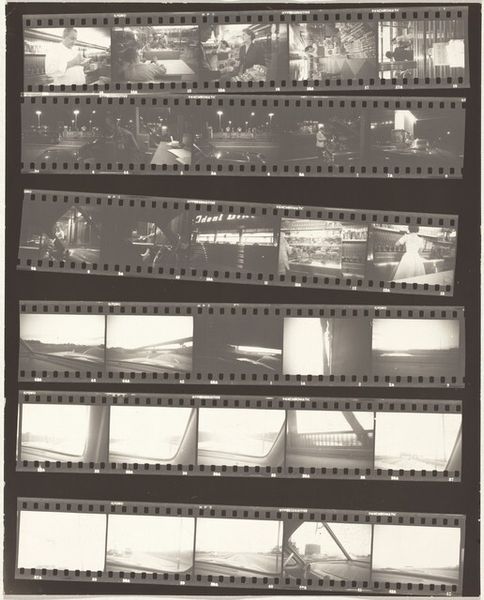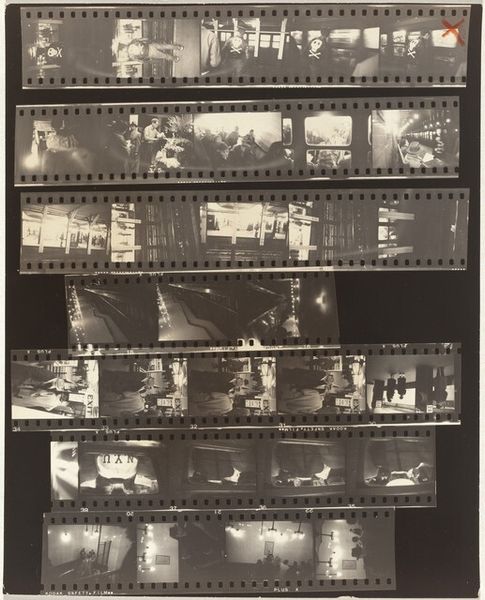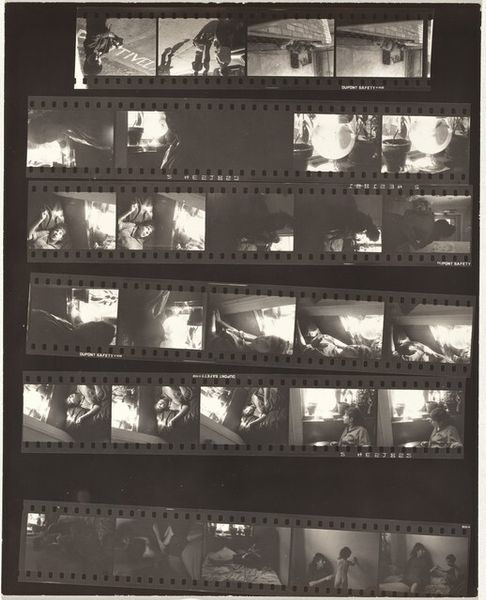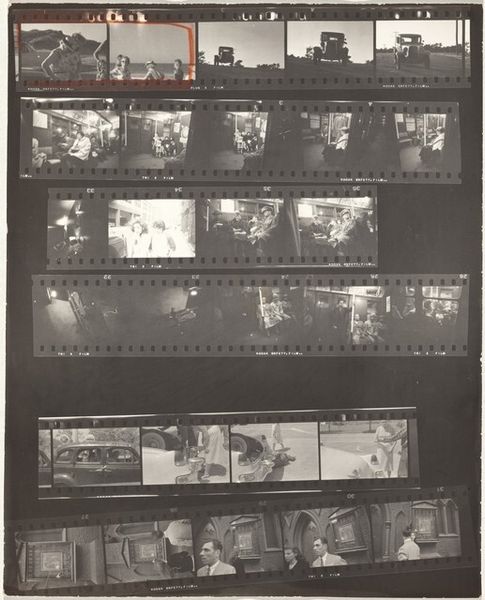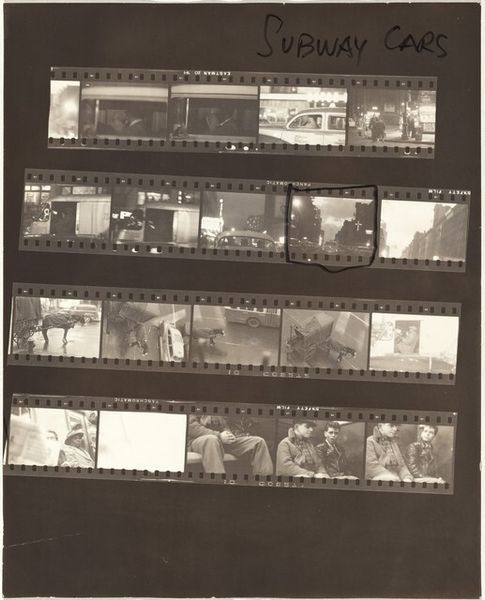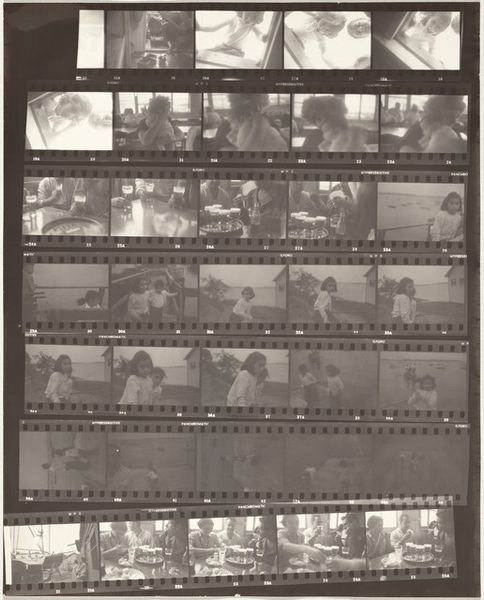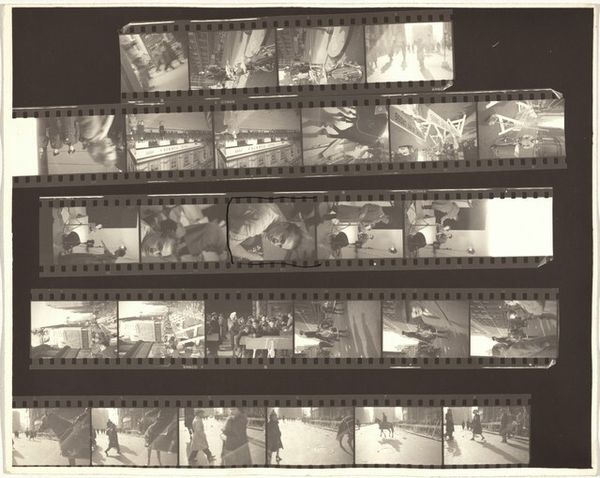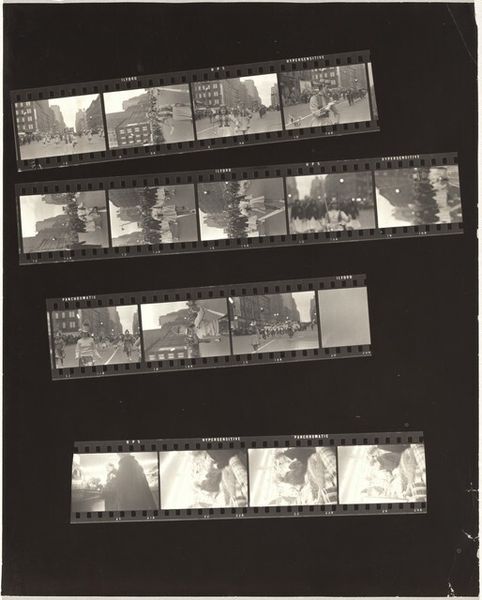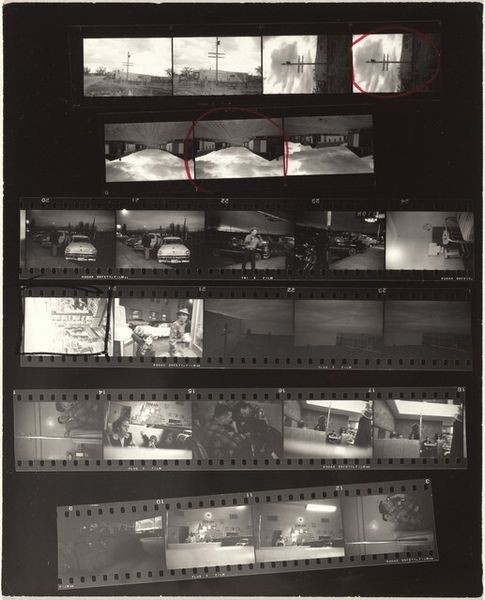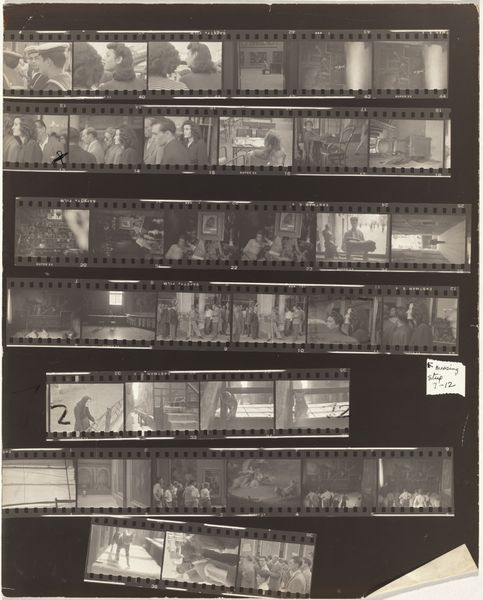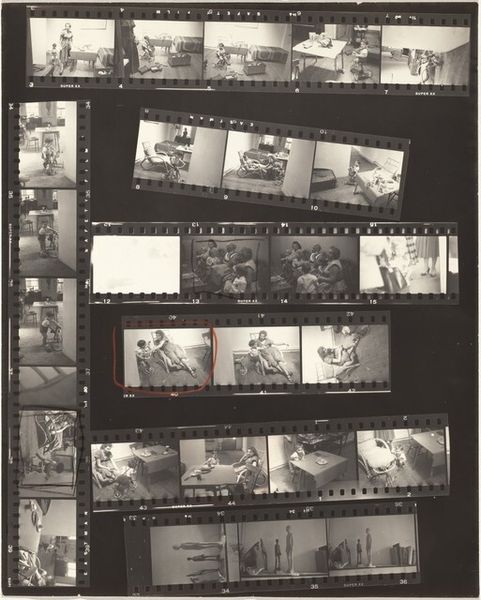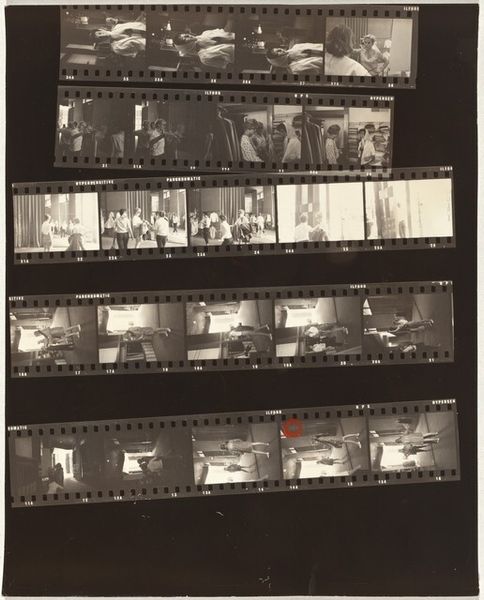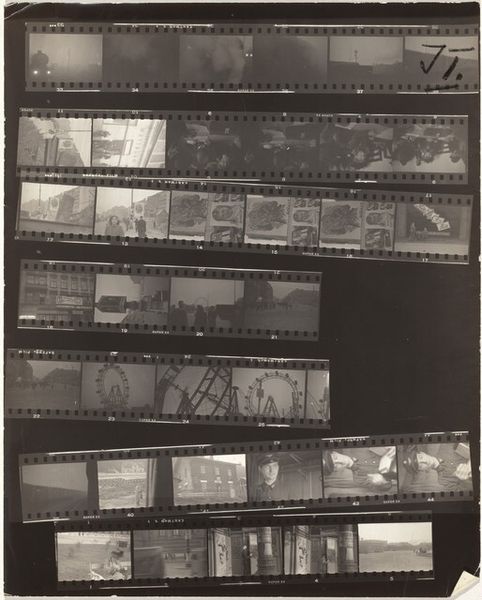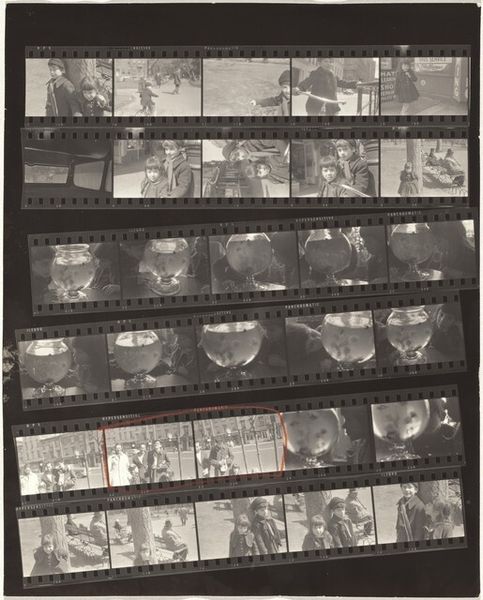
photography, gelatin-silver-print
#
film photography
#
street-photography
#
photography
#
gelatin-silver-print
#
modernism
Dimensions: overall: 25.3 x 20.3 cm (9 15/16 x 8 in.)
Copyright: National Gallery of Art: CC0 1.0
Curator: Robert Frank's "Cowboys I," from 1954, is presented as a contact sheet of a gelatin-silver print, revealing a series of exposures that offer a glimpse into Frank's photographic process. What’s your initial response to this sheet of images? Editor: Well, visually, it feels raw, almost like evidence. The sequential layout makes you think about the artist’s perspective as he was shooting, and how that immediacy impacts the overall feeling. There’s a gritty quality to it, emphasized by the contrast of the blacks and whites. Curator: Absolutely, this work emphasizes process over a singular polished image. Think about the physical act of shooting and developing—each frame representing not just a picture, but a moment in labor, from exposure to the darkroom. Consider too the social landscape: the late 1950s America that Frank, as an outsider, was critically observing. Editor: Yes, there's a strong contrast at play. Looking at the sequencing and focusing on the compositions—the cropping, the light—there's a palpable tension. The figures, and even streetscapes, feel deliberately off-kilter, suggesting discomfort, or perhaps alienation. Curator: Indeed. Each photograph within this sheet represents a document of that social and cultural climate. These are not portraits in celebration of cowboy culture, but critical observations, focusing more on urban isolation and social interactions than romantic depictions of the West. What do you make of that interplay between representation and critique? Editor: That's insightful. Frank disrupts the heroic archetype we associate with cowboys. His artistic intent uses composition and tonal shifts to expose not celebrate—the everyday reality. Curator: The very medium contributes too! As a photographic sequence, the act of witnessing becomes iterative; each frame questions and informs the next. Consider the viewer’s active role in decoding Frank’s social observations through his deliberate approach to capturing specific moments and assembling them. Editor: I appreciate the stark honesty it shows, no frills, straight from film to print. Examining each photograph adds to the artist’s goal to reflect and respond to what he captured. Curator: Precisely, Frank challenges us to consider art not just as a produced outcome, but as the result of labor that reflects, refracts, and comments on society itself. Editor: Yes, it urges us to appreciate the formal decisions in order to interpret meaning; a brilliant reminder of photography's narrative potential.
Comments
No comments
Be the first to comment and join the conversation on the ultimate creative platform.
